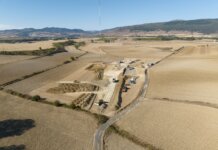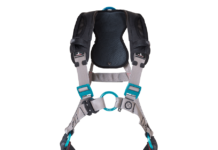A team of researchers is developing a mooring system that uses an integrated network of anchors and lines to hold floating offshore wind turbines in place for industrial-scale projects.
Sanjay R. Arwade and Don J. DeGroot from the University of Massachusetts Amherst, Charles P. Aubeny from Texas A&M University, and Melissa Landon from the University of Maine are conducting the research with a three-year, $497,341 grant from the National Science Foundation.
The team is working with Vryhof Anchors, which produces offshore anchoring systems, including the one used by Norway’s floating offshore turbine.
The principal goal of the research is to develop projects where floating turbines are moored using a networked series of anchors and cables to hold the entire wind farm in place. With current projects, each floating wind turbine has its own individual anchoring system. However, according to the researchers, their proposed system would save money and require fewer anchors and geotechnical site investigations.
In order to accomplish this goal, the researchers plan to evaluate the feasibility and design implications of highly variable soil conditions on the ocean floor for securing the anchors, the layout of the wind farms, and the complicated dynamics that cause loads on the anchors. In addition, the scientists will be developing wind and wave models for the best placement and orientation of the wind farms.
The team is also looking at the best designs for the mooring lines – the connections between the floating wind turbine and the anchors, explains Arwade. They will also develop 3D models for measuring the behavior of the anchors on the sea floor and the best designs for the multiple cables attached to each anchor.




